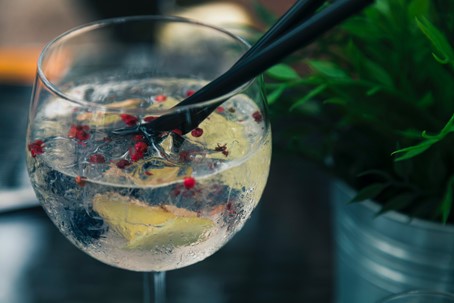Gin is synonymous with refreshment. It is considered by many to make the perfect aperitif and is famously shaken, not stirred in 007’s favourite cocktail. In (semi) recent times, the number of gins in the marketplace has skyrocketed. So much so that it is probably impossible to count the number of gins available globally. However, someone who has tried, estimates that there are currently more than 5,400! Gin’s past was not always as bright as its present and future. In the 18th century, it earned the name mother’s ruin due to widespread overenthusiastic consumption, especially in London, England. In Great Britain this resulted in new laws designed to control its sale. These continue to shape the spirits market today.
Gin is almost certainly the most diverse spirit. By diverse, I mean diverse in flavour, colour, the ingredients used, and the processes and equipment used to produce it. That said, compared to many spirits, we have more precise control over what we create when making gin. This makes gin a very enjoyable and rewarding spirit to produce.
Along with diversity, much of the production of gin falls more into the realms of art and craft than science and technology. This means that developing a course on gin production was not without its challenges. Searching for scientific and technical literature on gin often led to more questions than answers, the principal one being “is that it?”. In spite of these challenges, I know that what we have produced is the most comprehensive, technically accurate and up to date source of gin production knowledge available. While researching the course, we unearthed some interesting facts and fables, such as:
- Someone has made a gin by distilling ants
- Gin, or at least its forerunner is thought to have been used as medicine in Europe in the 13th century
- Juniper, gins main source of flavour, grows wild rather than on farms
- The base spirit used for gin can come from cereals, grapes, potatoes, peas and even camel milk
- Some gin is made simply by mixing a flavourless spirit with bought-in flavourings
- Navy strength gin comes from when sailors in the British Navy tested the strength of their gin ration using gunpowder. If the gunpowder ignited when soaked in the gin, it was Navy strength
- Sloe gin is called gin even though it’s actually a liqueur.

The gin production course provides essential knowledge and best practice for gin production at a commercial scale. It introduces the all-important gin botanicals and the unsung hero, neutral spirit. It provides an in-depth review of the current knowledge of gin flavour and the methods and technologies that can be used to optimise it in the distillery. It also explains how to assess and analyse gin and its ingredients.
We have top tips from leading distillers and spirits experts. These include:
Kirsty Black – Master Distiller, Arbikie Distillery
Chris Hepple – Head of Operations, Hepple Spirits Company
Meeghan Murdock – Distiller and Spirits Consultant
Hugh Holds – Distiller, Sensory Scientist and PhD Student
Renaldo Fourie – Master Distiller, DGB(Pty) Ltd.
Abhishek Banik – Head Distiller, Copper Rivet Distillery
If you are looking to improve your gin distilling knowledge or add a great new gin to your spirit portfolio, the Gin Production course should be just what you need.
Written by Stuart Howe, Technical Development Manager at the IBD.




